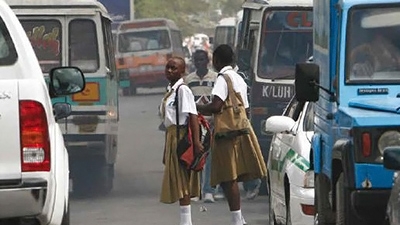Nelson Mandela's great-granddaughter Zenani was killed in a car crash as she was returning home from a World Cup concert in Soweto in 2010. Her death, two days after her 13th birthday, drew global attention to the high toll in lives and devastating injuries from road traffic crashes globally. Their loss also turned the Mandela family into activists for global road safety.
"On the same day that I lost Zenani, a thousand other families also lost a child on the world's roads," her mother, Zoleka Mandela, writes on the website of the Zenani Mandela Campaign. "This disaster continues to rob us of 1,000 young people every single day."
As Global Road Safety Week gets underway, Zenani's cousin Kweku Mandela – an activist for the campaign and grandson of Nelson Mandela – will join Safe Kids Worldwide President and CEO Kate Carr and former Costa Rica Transport Minister Karla Gonzalez, now the World Bank's South Asia region transport sector manager, for a live-streamed event to discuss the challenges of pedestrian safety and how to lower the toll on human lives.
The event, part of the 2nd Global Road Safety Week (May 6-12), draws attention to the urgent need to better protect pedestrians worldwide, generate action on the measures needed to do so, and contribute to achieving the goal of the Decade of Action for Road Safety 2011-2020. People worldwide will also
A deadly epidemic
Nearly 1.3 million people are killed annually by road crashes. Approximately 90 percent of these crashes are in low- or middle-income countries.
This epidemic is a larger global burden of disease than malaria or tuberculosis. The recent Global Burden of Disease study found road crashes to be among the top 10 causes of death globally and the No. 1 killer of young people ages 15-24.

